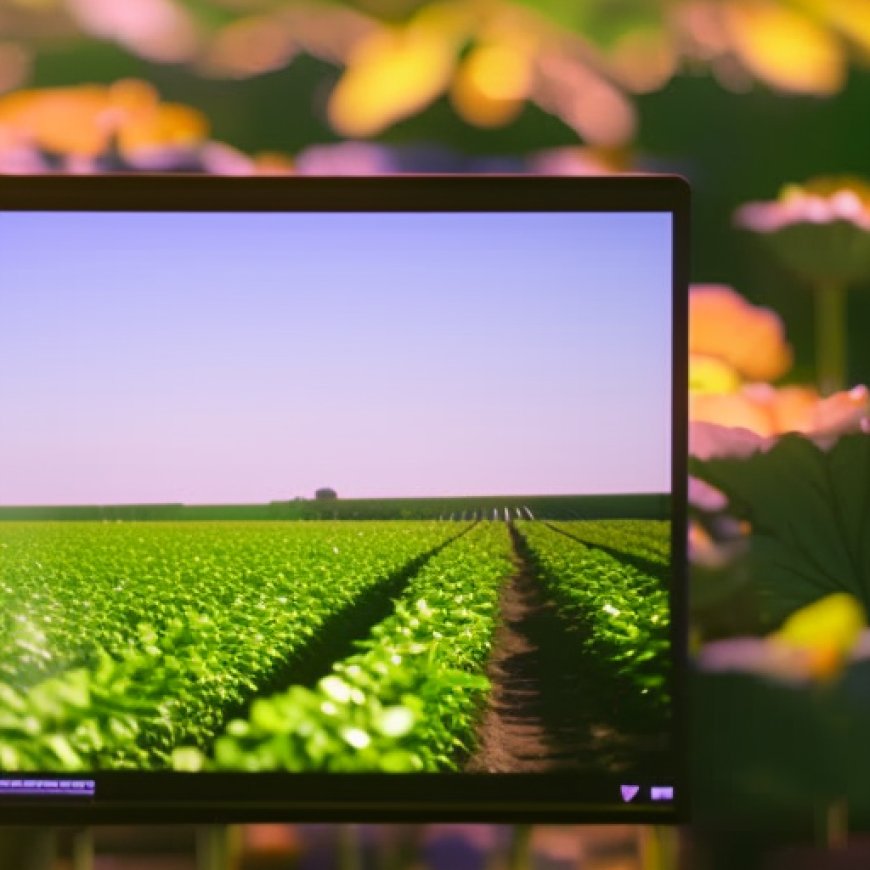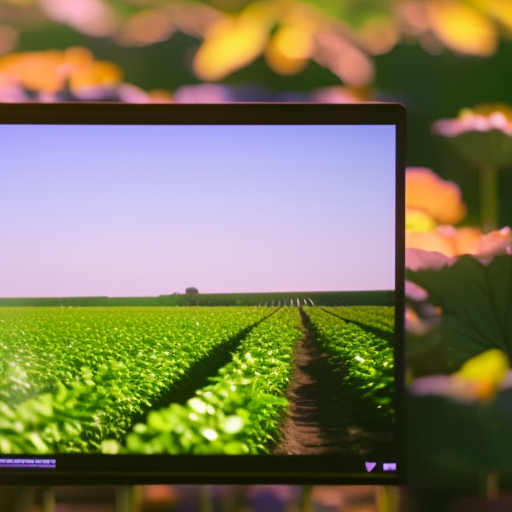USDA-ERS Study: Tech advancement in agriculture increased outputs and reduced inputs over time
USDA-ERS Study: Tech advancement in agriculture increased outputs and reduced inputs over time RFD-TV


Farmers and Technology: Driving Agricultural Growth and Sustainability
As farmers face mounting input costs amid soaring interest rates, new data from the U.S. Department of Agriculture’s Economic Research Service (USDA-ERS) highlights the crucial role of technology in agricultural growth without requiring additional inputs.
The Impact of Technological Advancements
According to the landmark USDA-ERS report, “Precision Agriculture in the Digital Era: Recent Adoption on U.S. Farms,” agricultural output has nearly tripled over the last 70 years (from 1948 to 2021). This substantial increase can be attributed to advancements in genetics, chemicals, machinery, and organizational practices within the agricultural sector.
Conversely, in this same period, farming input usage slightly declined.
Enhancing Efficiency and Reducing Input Costs
The growth in agricultural output has been closely tied to increases in total factor productivity (TFP). TFP measures the amount of agricultural output produced by all inputs combined. This indicates that technological innovations have enabled farmers to produce more with fewer resources, thus driving efficiency and reducing input costs.
The Role of Sustainable Development Goals (SDGs)
These findings underscore the importance of adopting and investing in technological solutions within the agricultural industry. By embracing innovations that enhance productivity and efficiency, farmers can navigate the challenges posed by rising input costs and interest rates while sustaining and expanding their operations.
Related Articles:
- The oldest soda pop in America belongs to Vernor’s
- 10 Innovations that Revolutionized Agriculture
- Farmland real estate values face downward pressure
SDGs, Targets, and Indicators
1. No Poverty
- Target 1.4: By 2030, ensure that all men and women, in particular the poor and the vulnerable, have equal rights to economic resources, as well as access to basic services, ownership, and control over land and other forms of property, inheritance, natural resources, appropriate new technology, and financial services, including microfinance.
- Indicator 1.4.2: Proportion of total adult population with secure tenure rights to land, with legally recognized documentation and who perceive their rights to land as secure, by sex and by type of tenure.
2. Zero Hunger
- Target 2.3: By 2030, double the agricultural productivity and incomes of small-scale food producers, in particular women, indigenous peoples, family farmers, pastoralists, and fishers, including through secure and equal access to land, other productive resources and inputs, knowledge, financial services, markets, and opportunities for value addition and non-farm employment.
- Indicator 2.3.1: Volume of production per labor unit by classes of farming/pastoral/forestry enterprise size.
9. Industry, Innovation, and Infrastructure
- Target 9.5: Enhance scientific research, upgrade the technological capabilities of industrial sectors in all countries, in particular developing countries, including by 2030 encouraging innovation and substantially increasing the number of research and development workers per 1 million people and public and private research and development spending.
- Indicator 9.5.1: Research and development expenditure as a proportion of GDP.
12. Responsible Consumption and Production
- Target 12.2: By 2030, achieve the sustainable management and efficient use of natural resources.
- Indicator 12.2.1: Material footprint, material footprint per capita, and material footprint per GDP.
13. Climate Action
- Target 13.3: Improve education, awareness-raising, and human and institutional capacity on climate change mitigation, adaptation, impact reduction, and early warning.
- Indicator 13.3.1: Number of countries that have integrated mitigation, adaptation, impact reduction, and early warning into primary, secondary, and tertiary curricula.
Analysis
1. Which SDGs are addressed or connected to the issues highlighted in the article?
The SDGs that are addressed or connected to the issues highlighted in the article are:
– SDG 1: No Poverty
– SDG 2: Zero Hunger
– SDG 9: Industry, Innovation, and Infrastructure
– SDG 12: Responsible Consumption and Production
– SDG 13: Climate Action
2. What specific targets under those SDGs can be identified based on the article’s content?
Based on the article’s content, the specific targets under the identified SDGs are:
– Target 1.4: Ensuring equal rights to economic resources and access to basic services.
– Target 2.3: Doubling agricultural productivity and incomes of small-scale food producers.
– Target 9.5: Enhancing scientific research and technological capabilities.
– Target 12.2: Achieving sustainable management and efficient use of natural resources.
– Target 13.3: Improving education and awareness on climate change.
3. Are there any indicators mentioned or implied in the article that can be used to measure progress towards the identified targets?
Yes, there are indicators mentioned or implied in the article that can be used to measure progress towards the identified targets. These indicators include:
– Indicator 1.4.2: Proportion of total adult population with secure tenure rights to land.
– Indicator 2.3.1: Volume of production per labor unit by classes of farming/pastoral/forestry enterprise size.
– Indicator 9.5.1: Research and development expenditure as a proportion of GDP.
– Indicator 12.2.1: Material footprint, material footprint per capita, and material footprint per GDP.
– Indicator 13.3.1: Number of countries that have integrated climate change into curricula.
Table: SDGs, Targets, and Indicators
| SDGs | Targets | Indicators |
|---|---|---|
| SDG 1: No Poverty | Target 1.4: By 2030, ensure that all men and women, in particular the poor and the vulnerable, have equal rights to economic resources, as well as access to basic services, ownership, and control over land and other forms of property, inheritance, natural resources, appropriate new technology, and financial services, including microfinance. | Indicator 1.4.2: Proportion of total adult population with secure tenure rights to land, with legally recognized documentation and who perceive their rights to land as secure, by sex and by type of tenure. |
| SDG 2: Zero Hunger | Target 2.3: By 2030, double the agricultural productivity and incomes of small-scale food producers, in particular women, indigenous peoples, family farmers, pastoralists, and fishers, including through secure and equal access to land, other productive resources and inputs, knowledge, financial services, markets, and opportunities for value addition and non-farm employment. | Indicator 2.3.1: Volume of production per labor unit by classes of farming/pastoral/forestry enterprise size. |
| SDG 9: Industry, Innovation, and Infrastructure | Target 9.5: Enhance scientific research, upgrade the technological capabilities of industrial sectors in all countries, in particular developing countries, including by 2030 encouraging innovation and substantially increasing the number of research and development workers per 1 million people and public and private research and development spending. | Indicator 9.5.1: Research and development expenditure as a proportion of GDP. |
| SDG 12: Responsible Consumption and Production | Target 12.2: By 2030, achieve the sustainable management and efficient use of natural resources. | Indicator 12.2.1: Material footprint, material footprint per capita, and material footprint per GDP. |
| SDG 13:
Behold! This splendid article springs forth from the wellspring of knowledge, shaped by a wondrous proprietary AI technology that delved into a vast ocean of data, illuminating the path towards the Sustainable Development Goals. Remember that all rights are reserved by SDG Investors LLC, empowering us to champion progress together. Source: rfdtv.com
Join us, as fellow seekers of change, on a transformative journey at https://sdgtalks.ai/welcome, where you can become a member and actively contribute to shaping a brighter future.
|








